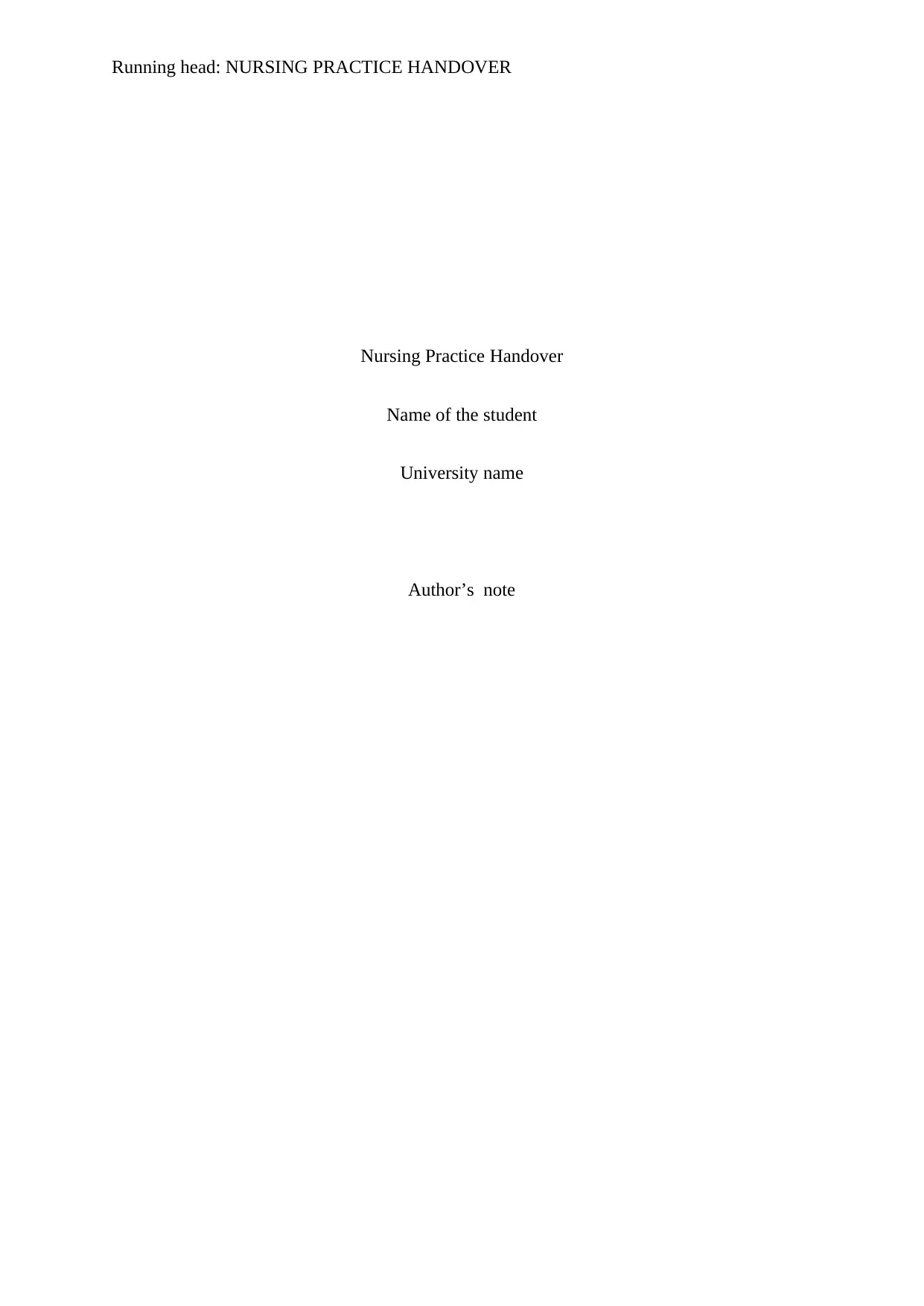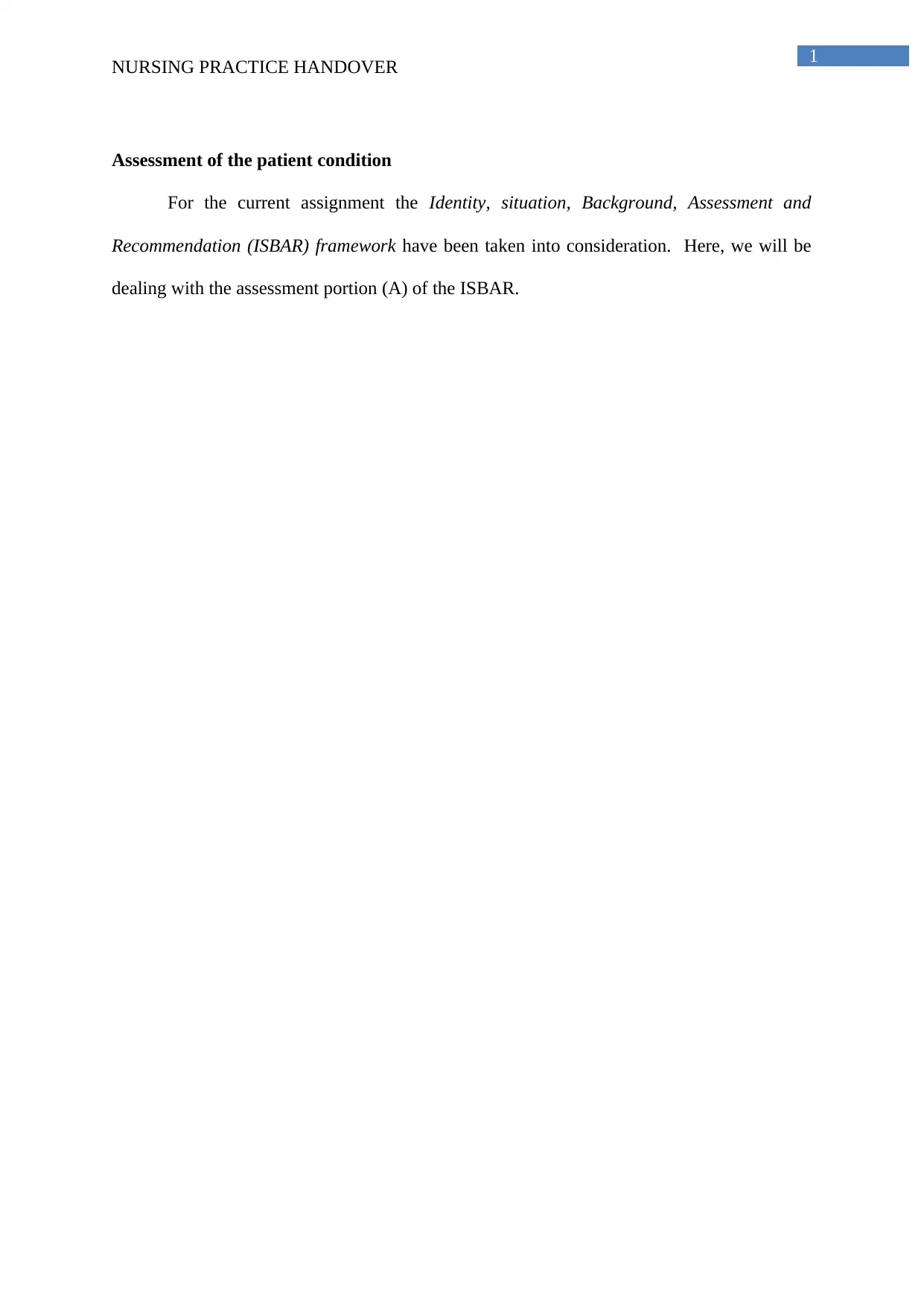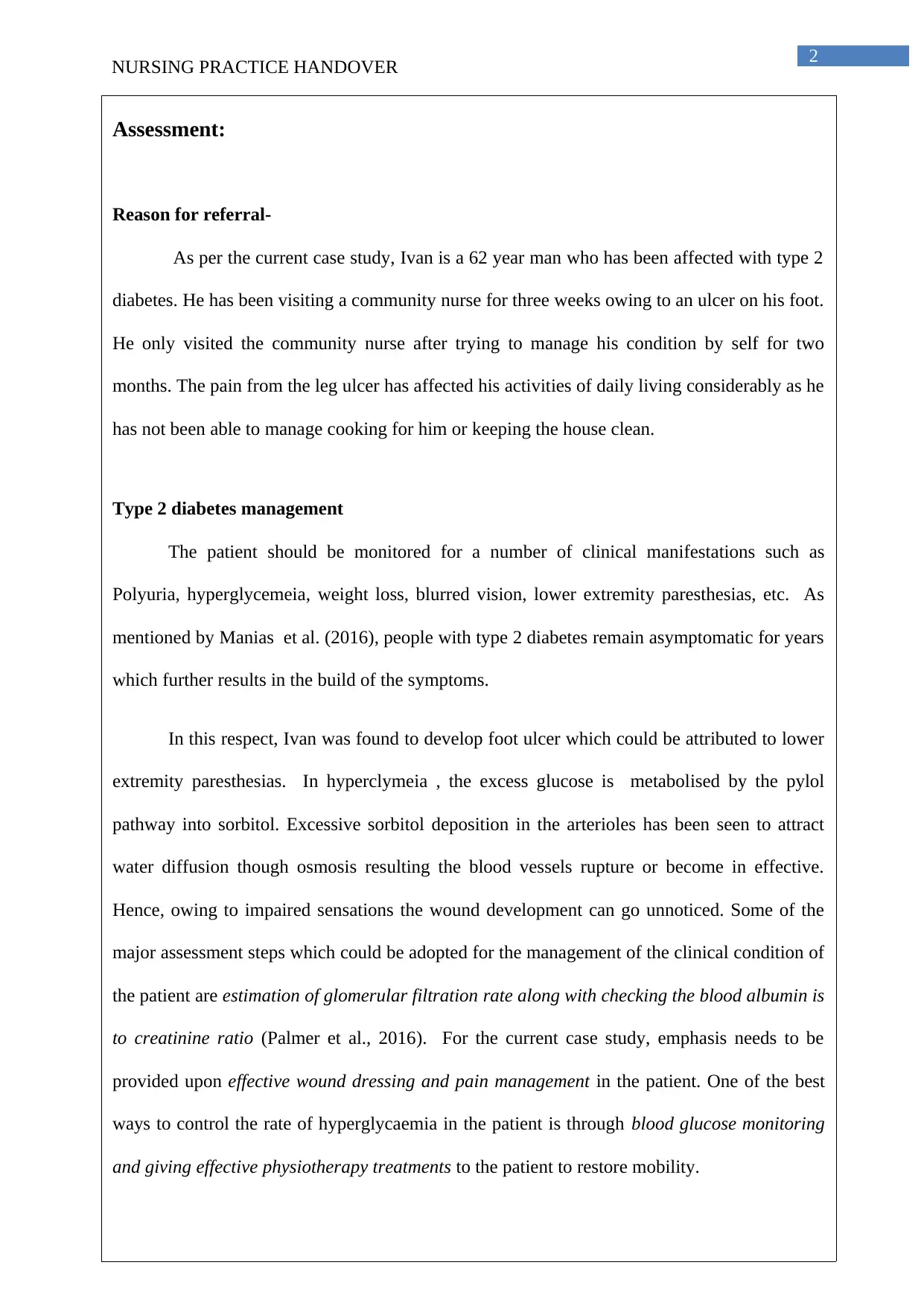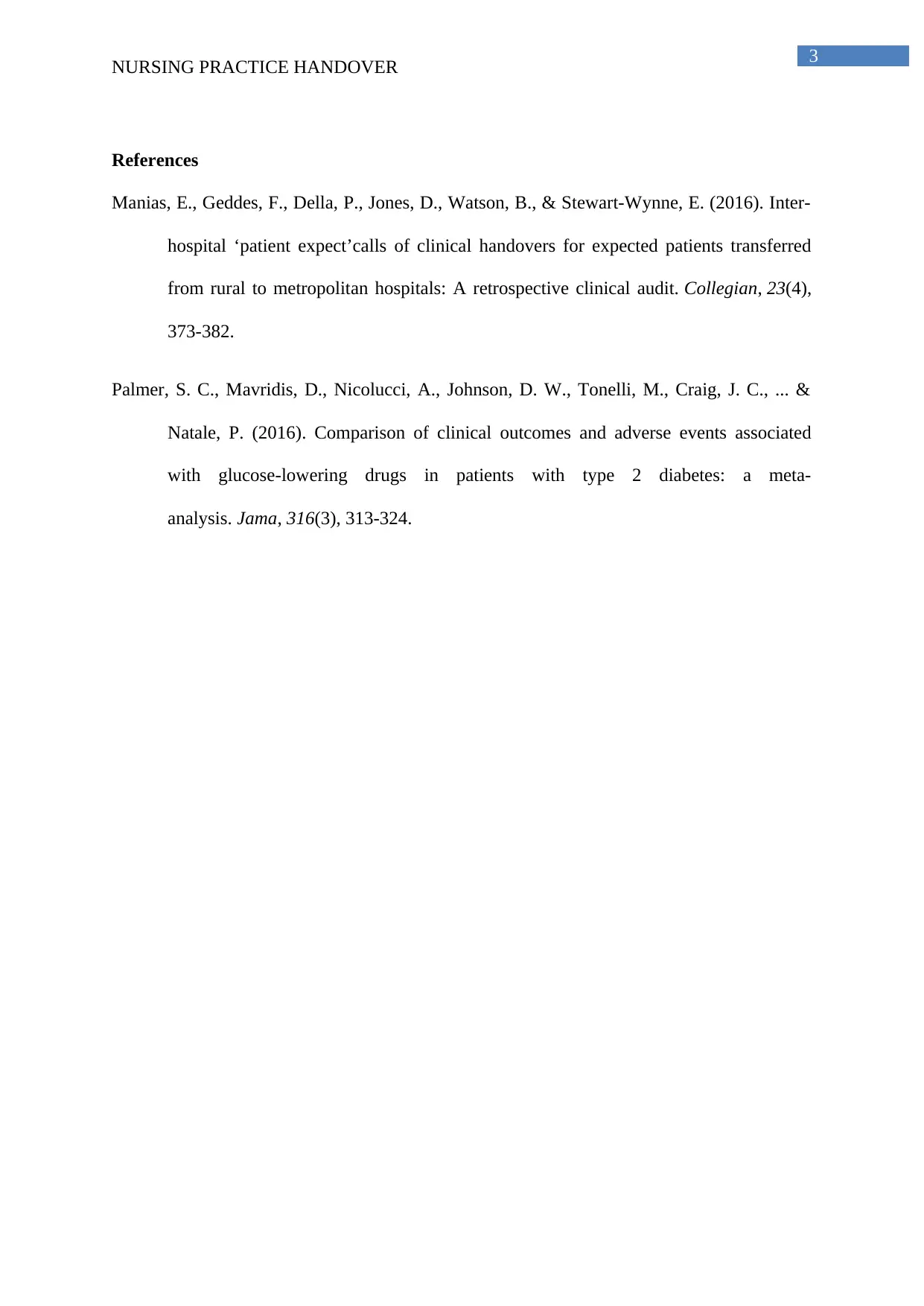Nursing Practice Handover: Assessment of Type 2 Diabetes Management
VerifiedAdded on 2023/06/13
|4
|531
|388
Report
AI Summary
This report provides an assessment of a 62-year-old male patient, Ivan, diagnosed with type 2 diabetes and a foot ulcer, who has been receiving care from a community nurse. The assessment follows the ISBAR framework, focusing on the patient's condition, reason for referral, and diabetes management. The report highlights the importance of monitoring clinical manifestations like polyuria and hyperglycemia, which can lead to complications such as foot ulcers due to lower extremity paresthesias. Key assessment steps include estimating glomerular filtration rate and checking the blood albumin to creatinine ratio. Emphasis is placed on effective wound dressing, pain management, blood glucose monitoring, and physiotherapy to restore mobility. The report references relevant studies on clinical handover and glucose-lowering drugs in type 2 diabetes management.
1 out of 4











![[object Object]](/_next/static/media/star-bottom.7253800d.svg)